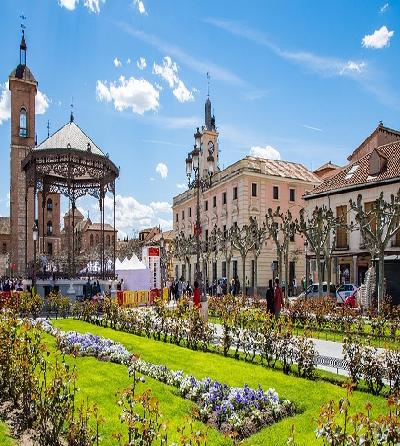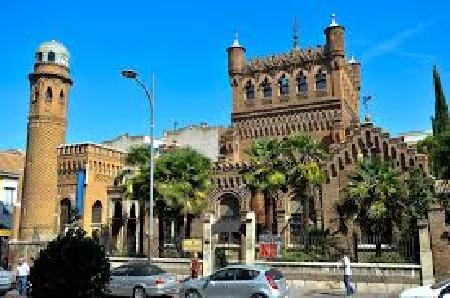
The city of Alcalá de Henares was known to the Romans as Complutum, the city was destroyed in 1000 AD. and rebuilt in 1038 by the Muslims, who called it Al-Qalʿah al-Nahr. It is a city with 2,000 years of history, whose origins date back to the Roman Complutum. Walking the streets that saw Miguel de Cervantes, author of the immortal "Don Quixote" born, also discover spectacular monuments and buildings.
This historic city has a large number of churches, palaces, mansions, gardens, monasteries, chapels, student residences ... It is not surprising that its University and its historic center have been declared a World Heritage Site by UNESCO.
There are also other guided tours available, which explore the most emblematic places of Alcalá de Henares. Go to the tourist information office where they will advise you on prices, hours and visits.
Among the sites that can be visited are:
Calle Mayor:
The historic center of Alcalá de Henares is a Unesco World Heritage Site and is a delightful place to stroll. One of the most picturesque streets in the city is Calle Mayor, originally designed in the 12th century. The street is lined with 18th century pillared porticos and is home to many shops, bakeries, and restaurants.
Cervantes House Museum:
Alcalá is perhaps best known for his famous son, the Spanish writer Miguel de Cervantes, who wrote Don Quixote, one of the most important and enduring novels in world literature. You can discover the early life of one of the world's most famous writers in the house where he grew up, which is now a museum. The house takes visitors back to the 16th and 17th centuries and is full of furniture and artwork from the period.
University of Alcalá:
The Universidad de Alcalá was founded in 1293 as a medieval university and recovered as a modern university in 1975. It attracts many Spanish and international students - many of whom come to Erasmus or study abroad programs. The university is also famous for its annual Cervantes Prize, awarded for the lifetime achievement of a Spanish-language writer. You can see the buildings that make up the historic campus in the city center.
Regional Archaeological Museum:
Located in an old convent founded in the 17th century, the Archaeological Museum of Alcalá offers visitors an overview of the history of the region of the Community of Madrid from prehistory to the present. From the earliest settlers to the Roman occupants and the Spanish court, the museum is a fascinating insight into the region's diverse historical makeup.
Cathedral:
The Cathedral of San Justo y San Pastor was built between 1497 and 1515 in the Gothic style and declared a national monument in 1904. The church suffered serious damage when it burned down during the Spanish Civil War (1936-39) and lost many of its treasures in the fire.
Cervantes Square:
This beautiful square is dominated by the statue of the local character of the city: Miguel de Cervantes. The plaza is surrounded by several important buildings, including the Corral de Comedias, one of the oldest theaters in Europe, built between 1601 and 1602, and the Alcalá Town Hall.
Laredo Palace:
This extravagant palace, designed by the architect Manuel José de Laredo and built in 1882, is a mix of designs, from tiles and plaster reminiscent of the Alhambra to modernist and Gothic touches. The main style is Neomudéjar, a type of Moorish revival architecture that spread throughout Spain in the late 19th century. It was declared a national monument in 1975.
Madrid Gate:
The Madrid gate was one of the entrances to the ancient city of Alcalá, in the past protected by the wall that can be seen next to the gate.
This is the door that people used when they came from Madrid to Alcalá. It was in front of the Puerta de Alcalá (which is in Madrid) In fact, both were linked by a path, by which you could go directly from one door to the other.

